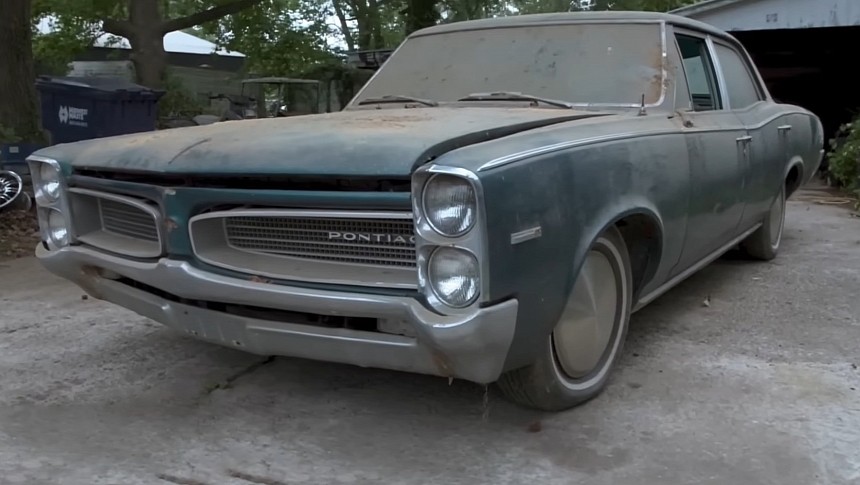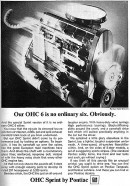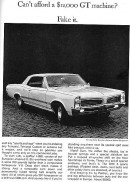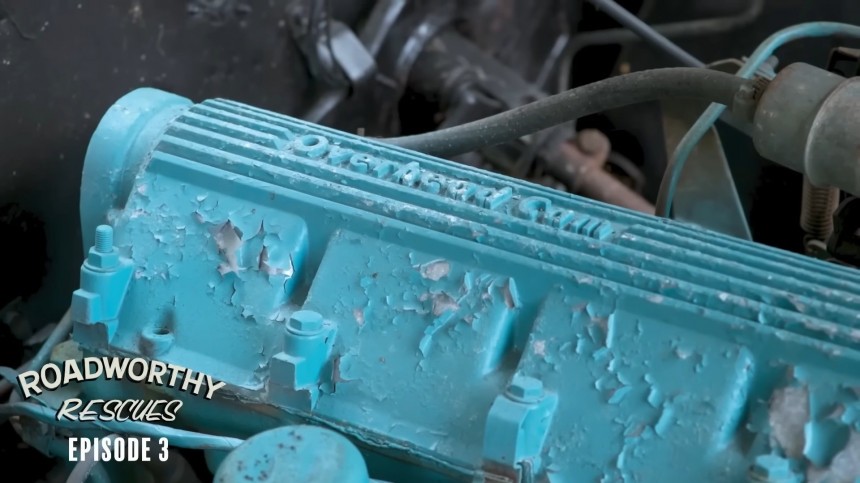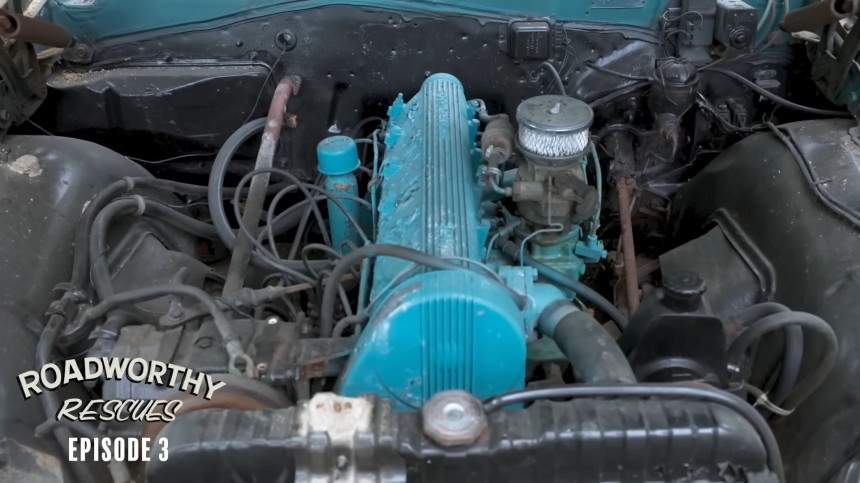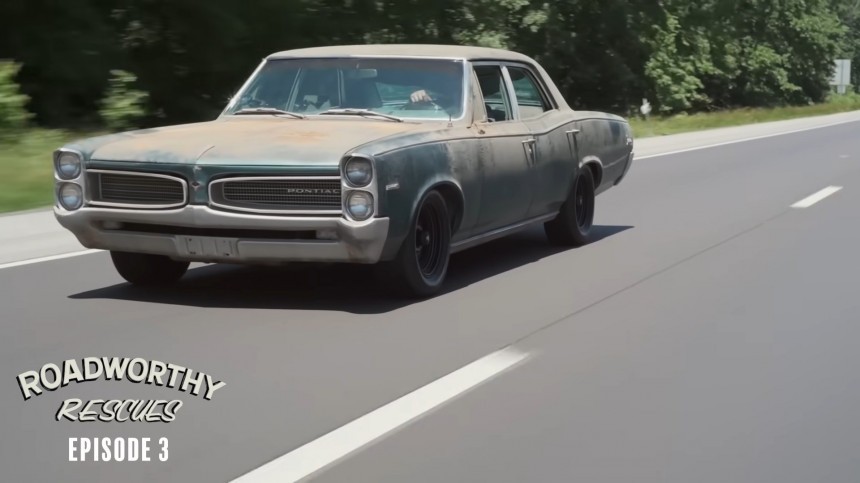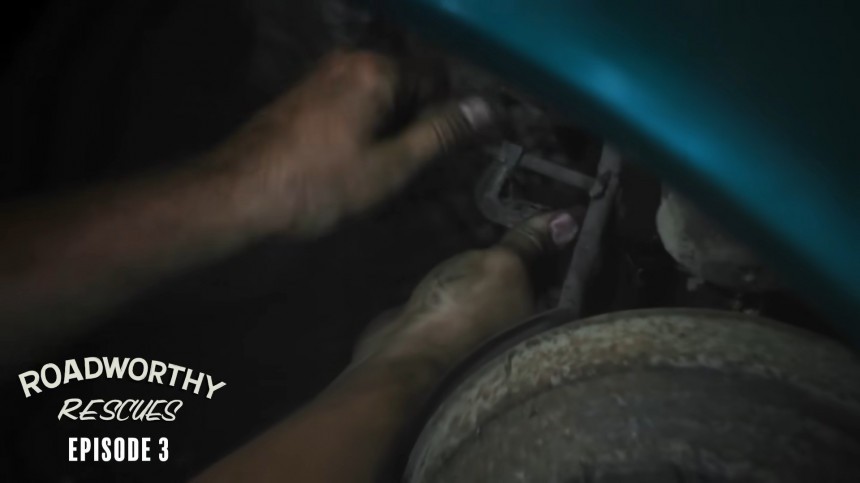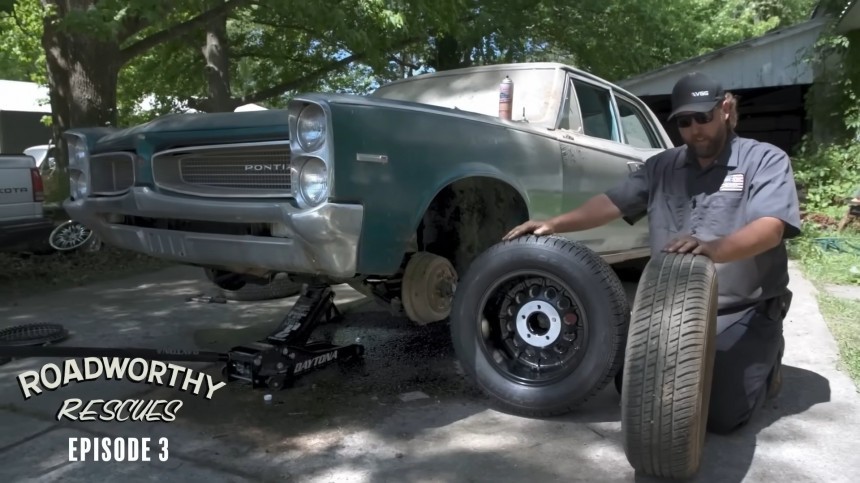What’s 1966 famous for? Ford showed Ferrari what the American spirit is all about when the Blue Oval cowboys took the 1-2-3 finish at the Le Mans 24-hour race. Pontiac consolidated the muscle car culture by putting the GTO – another Ferrari-beating story – alongside the other models of the GM division. Mother Mopar unleashed the Street HEMI, the road-friendly version of the famous 426-cube motor.
With all that going on, it’s understandable why another Detroit event wasn’t getting the spotlights, although it also bore the famous John DeLorean signature. Pontiac’s genius chief engineer had been cooking it for a few years before letting it out on the streets. Still, his contribution to the progress of motoring came at the wrong time, in the wrong place.
DeLorean had made the decisive move when he put a 389-cubic-inch V8 (6.4-liter) as an option for the Pontiac Tempest Le Mans in 1964. It set the foundation for the muscle car movement for the rest of the decade. Eight cylinders arranged in two banks with a 90-degree Vee between them, as many cubic inches as possible, a small body, and the Stoplight Grand Nationals were a lot more fun all of a sudden.
In the meantime, DeLorean had been working on another equally – if not even more – exciting project. The 1964 Pontiac Banshee was a sportscar proposal with one radical personality feature: instead of the regular V8, the Pontiac sportscar sported an inline-six. Not just any ordinary six-cylinder, but a belt-driven overhead camshaft powerplant.
Eventually, the GM top brass decided inter-divisional competition did not favor Chevrolet’s Corvette success, so they axed the Pontiac. Interestingly, the Banshee was very similar in styling to the 1968 debutant C3 generation of America’s sportscar. Eventually, the Pontiac OHC inline-six didn’t share its concept car’s fate and was put into mass production, beginning with the 1966 Tempest.
The little engine – 230 cubic inches of displacement / 3.8 liters in size – was a feisty six-pot plant with an appetite for small-block V8s. John DeLorean supervised the development of the non-mainstream engine and, once the OHC6 testing was completed, ordered a high-performance version of it to be built.
The base model of the motor could produce 165 hp and 216 lb-ft of torque (167 PS and 293 Nm). Interestingly, the Pontiac design was a solid 25 hp above the Chevrolet Turbo-Thrift 230 on which it was based. DeLorean sought ways to improve the performance of the Chevy Six and found a suitable solution across the Atlantic.
The European carmakers had adopted the overhead camshaft architecture for a while, allowing the engineers to reduce the number of moving parts in the engine. The upside-down design, with the valves under the cam, also increased valvetrain performance, permitted larger valves, and reduced the overall mass of the powerplant.
Pontiac didn’t shy away from boasting its new engine – it claimed that the more performant variant of the OHC6 was 200 lb – 91 kg – lighter than a similarly powerful V8. The high-spirited version of the inline-six was good for 207 hp (210 PS) and 228 lb-ft (309 Nm), thanks to its four-barrel carburetor and 10.5:1 compression. The standard variant had to make do with a one-BBL and 9.0:1 compression – the latter allowed it to run on regular fuel, unlike its muscular sibling, which required premium gasoline.
The camshaft was driven by a ‘revolutionary, glass-fiber reinforced neoprene belt,’ one inch (25.4 mm) wide, permanently lubed, and with solid cogs to minimize the risk of slipping. As an added protection against a hypothetical chance encounter between a piston and a valve, the Pontiac OHC6 was designed not to be an interference engine. But Pontiac was so confident of its industry-first timing belt overhead camshaft inline-six that it claimed the belt would outlast everything else in the car, save for the driver (read the ad in the gallery, if you will).
That last statement is – at least partly - true if we look at the video attached to this story. One four-door Pontiac Tempest sedan from 1966, has been sitting since 1993, collecting dust and slowly degrading as years went by. What this out-of-the-ordinary-barn-find has to show is the famed Over-Head Cam Six engine with a one-barrel carburetor.
Surprisingly, for a car that allegedly hasn’t run since Bill Clinton was at the White House, this more-door Tempest doesn’t need too much encouragement to get going. Some ignition wires, sparkplugs, a distributor contact, and a nice carburetor adjustment – all performed on the spot by Derek Bieri, the massively popular car vlogger and YouTuber.
With some wit and some elbow grease – of which the classic car rescuer has indiscriminate amounts – the Pontiac starts, runs, and eventually drives. This last bit is the culmination of his otherwise swift work on the ’66 sedan after thoroughly inspecting and repairing the brakes. Curiously, the right front wheel brake line was C-clamp-locked.
Probably, at some point in the 30-year retirement of this Tempest, someone performed a drum brake curb-side service and seized the hose to prevent the fluid from draining. The downside of that presumed intervention is that whoever did it left the clamp on the hose.
Being an innovative technology, the Pontiac OHC6 wasn’t met with standing ovations – and there were several fundamental reasons for that reluctance. First off, it was relatively pricey – sometimes above a V8, and that wasn’t a good sign in the eyes of a prospect. Second, its intended purpose – fuel economy – wasn’t as powerful an argument in the mid-and late-60s as needed to serve the engine’s cause.
Gasoline was cheap, the horsepower wars were in full swing, and performance was one helluva sales incentive. Say what they would, but Pontiac’s bosses couldn’t convince anyone that a muscle car could smoke tires or win dragstrip jousts because it had a fiberglass timing belt.
And there was one more inherent deterrent: engine maintenance. With a new technology on the market, qualified mechanics weren’t often found, which posed a problem. Also, because it didn’t benefit the luxury of being a tired and tested architecture, the OHC6 was a finicky choice.
Some drivers sarcastically remember how their six-cylinder Pontiac drank a gallon of engine oil every other tank fill-ups– yet the valvetrain complained it didn’t get enough lubricant. Also, adjusting the valves was one of the regular chores for the typical OHC6 owner.
The Pontiac six-cylinder engine and its belt-driven overhead camshaft lasted from 1966 to 1969. Despite its inherent advantages, the overall cost of putting it in cars – and keeping it in running order – was deemed too high to continue production. And, while it didn’t break the bank during its short lifespan, the idea caught on and eventually became the industry norm – with a significant delay of around two decades.
DeLorean had made the decisive move when he put a 389-cubic-inch V8 (6.4-liter) as an option for the Pontiac Tempest Le Mans in 1964. It set the foundation for the muscle car movement for the rest of the decade. Eight cylinders arranged in two banks with a 90-degree Vee between them, as many cubic inches as possible, a small body, and the Stoplight Grand Nationals were a lot more fun all of a sudden.
In the meantime, DeLorean had been working on another equally – if not even more – exciting project. The 1964 Pontiac Banshee was a sportscar proposal with one radical personality feature: instead of the regular V8, the Pontiac sportscar sported an inline-six. Not just any ordinary six-cylinder, but a belt-driven overhead camshaft powerplant.
The little engine – 230 cubic inches of displacement / 3.8 liters in size – was a feisty six-pot plant with an appetite for small-block V8s. John DeLorean supervised the development of the non-mainstream engine and, once the OHC6 testing was completed, ordered a high-performance version of it to be built.
The base model of the motor could produce 165 hp and 216 lb-ft of torque (167 PS and 293 Nm). Interestingly, the Pontiac design was a solid 25 hp above the Chevrolet Turbo-Thrift 230 on which it was based. DeLorean sought ways to improve the performance of the Chevy Six and found a suitable solution across the Atlantic.
Pontiac didn’t shy away from boasting its new engine – it claimed that the more performant variant of the OHC6 was 200 lb – 91 kg – lighter than a similarly powerful V8. The high-spirited version of the inline-six was good for 207 hp (210 PS) and 228 lb-ft (309 Nm), thanks to its four-barrel carburetor and 10.5:1 compression. The standard variant had to make do with a one-BBL and 9.0:1 compression – the latter allowed it to run on regular fuel, unlike its muscular sibling, which required premium gasoline.
The camshaft was driven by a ‘revolutionary, glass-fiber reinforced neoprene belt,’ one inch (25.4 mm) wide, permanently lubed, and with solid cogs to minimize the risk of slipping. As an added protection against a hypothetical chance encounter between a piston and a valve, the Pontiac OHC6 was designed not to be an interference engine. But Pontiac was so confident of its industry-first timing belt overhead camshaft inline-six that it claimed the belt would outlast everything else in the car, save for the driver (read the ad in the gallery, if you will).
Surprisingly, for a car that allegedly hasn’t run since Bill Clinton was at the White House, this more-door Tempest doesn’t need too much encouragement to get going. Some ignition wires, sparkplugs, a distributor contact, and a nice carburetor adjustment – all performed on the spot by Derek Bieri, the massively popular car vlogger and YouTuber.
With some wit and some elbow grease – of which the classic car rescuer has indiscriminate amounts – the Pontiac starts, runs, and eventually drives. This last bit is the culmination of his otherwise swift work on the ’66 sedan after thoroughly inspecting and repairing the brakes. Curiously, the right front wheel brake line was C-clamp-locked.
Being an innovative technology, the Pontiac OHC6 wasn’t met with standing ovations – and there were several fundamental reasons for that reluctance. First off, it was relatively pricey – sometimes above a V8, and that wasn’t a good sign in the eyes of a prospect. Second, its intended purpose – fuel economy – wasn’t as powerful an argument in the mid-and late-60s as needed to serve the engine’s cause.
Gasoline was cheap, the horsepower wars were in full swing, and performance was one helluva sales incentive. Say what they would, but Pontiac’s bosses couldn’t convince anyone that a muscle car could smoke tires or win dragstrip jousts because it had a fiberglass timing belt.
Some drivers sarcastically remember how their six-cylinder Pontiac drank a gallon of engine oil every other tank fill-ups– yet the valvetrain complained it didn’t get enough lubricant. Also, adjusting the valves was one of the regular chores for the typical OHC6 owner.
The Pontiac six-cylinder engine and its belt-driven overhead camshaft lasted from 1966 to 1969. Despite its inherent advantages, the overall cost of putting it in cars – and keeping it in running order – was deemed too high to continue production. And, while it didn’t break the bank during its short lifespan, the idea caught on and eventually became the industry norm – with a significant delay of around two decades.
